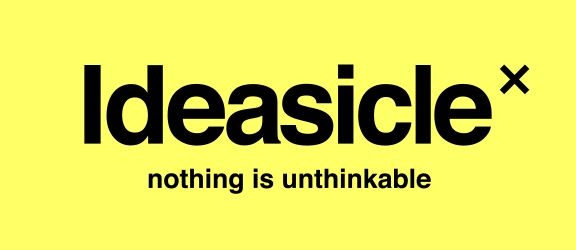With Vibe Coding All Bets Are On
Google defines “vibe coding” as a software development practice that uses AI to generate code from natural language prompts, descriptions, or "vibes" rather than from precise, line-by-line instructions. I don’t think people are truly internalizing the revolutionary implications of this one step in the arc of our technological innovation. What was once the domain of nerds in basements, protected by languages no one else has the time to learn, is now completely democratized. Anyone can code. Even me, and I am.
C++, Javascript, Python, or English?
Imagine you want to create a window seat in your living room where there is currently a bookshelf and windows and you simply speak to the bookshelf and tell it, “Transform yourself into a window seat with multiple paned windows from the seat to the ceiling, a red cushion across the seating area with dragonflies on it, and with the seat exactly 2.8 feet off the floor.” No matter how good the window seat idea was, it’s the bookshelf will ignore you. The skillset required to do such a build is still quite enormous. The design, knowing the right materials, the right tools, knowing how to use them, all of these skills render (pardon the pun) the DIY building of this window seat impossible for most of us.
Coding is no less intimidating. A coder must juggle multiple languages, debug errors, manage third-party APIs, and write efficient code that doesn’t crash. Until now, it’s been nearly impossible for non-coders to create anything meaningful without years of learning.
But with “vibe coding,” a user can literally use English to build any app they can dream up. It allows us to literally speak in code. And this is where it gets interesting.
in the beginning was the word
I’ve been vibe coding now for about five months. I’m building an app that all of you will find very interesting (I think). More on that in a second. But here’s how it works.
I use Replit after having first tried Grok-4, then Perplexity, Gemini and then Qwen. With most platforms, the LLM writes the code, but you still have to copy and paste it into files yourself—an easy way for non-coders like me to break everything.
So I kept trying different options until someone on X praised Replit (www.replit.com - I was not paid by Replit to post this). Replit was indeed different because it not only composed the code inspired by my written input, it placed the code into the code base and, added bonus, ran the code prior to finishing to make sure it works.
It truly felt like magic.
Better yet, I remember feeling a rush of hope and excitement when first internalizing the significance of a “MML” (my description, “My Language Model”). I’ve come up with several app concepts over the years, and until this year only moved forward with one (Ideasicle X) because of the expense. I had to get an investor involved to build the virtual platform, Ideasicle X, with real-live coders! But now?
All bets are on.
how you can get started vibe coding
Start with an idea—it doesn’t need to be a blockbuster. It could simply solve your own problem. For instance, I built a vibe-coded app for my venture The Branded Athlete to summarize research and develop insights. It’s just for me, but it makes my work easier.
First, get an idea. Or maybe you have one already. And it doesn’t have to be something blockbuster. It could just be something you need. For example, I built another app using vibe coding for my other venture The Branded Athlete,” to facilitate research transcript summarization, insight development, and soft idea generation. Only I will use it, but it helps me do my job.
Now armed with an idea get a Replit account (again, Replit is not paying me for this post). I’m sure there are other options, but Replit works for me. Setting up the account is free and they only charge you for the work it does. One of my near-fully-developed apps after about 4 months of fairly intensive work has racked up only $400 development charges with Replit. Not bad.
Next, follow the instructions to start your first app and once it’s open, find the Replit Agent. This little genie is your new best friend. You can toggle “Plan” or “Build” modes within the Agent to get help with planning out your app or building a new feature. The planning mode is super helpful because it “thinks” of things you won’t and will suggest ideas to build on yours. You can even ask it questions and have it provide recommendations when you face issues. Then, when ready to start building toggle to “Build” mode and your Agent starts composing code immediately.
Warning: you will feel more powerful than you have felt in a long time!
Tips:
Write a word doc describing the app concept, what you want it to do, and who it’s for. I didn’t do this at first and just started describing what I wanted without having full through it through and I’m sure I wasted some money. But you can upload a word doc as your first prompt to the Agent and you’ll be much farther along from the get-go than I was.
Be extremely explicit with your language into the Agent. Be very descriptive and don’t be afraid to be repetitive/redunant within a single prompt sometimes to make sure your directions are clear.
Use voice commands. I have found myself on the Replit app on my phone to dictate voice commands for new directions while testing the app on my iPad or MacBook Pro at the same time. Either way, voice commands aren’t required, but I find they make the process much speedier.
Consider API connections with LLMs like Grok-4 or ChatGPT. That basically means your app can seamlessly receive user input, reach out to an LLM for a response, and display responses within your app without the user having to go to the LLM website. Only useful if injecting AI responses into your app idea will help the user, of course. But it’s not hard, it’s very inexpensive to do, and can come with profound effects in your app experience.
Know it’s going to make mistakes. As magical and wonderful as Replit is, it does make coding errors and forgets to include features, so you need to check the Preview function after every prompt to make sure it did what you want. In fact, sub-tip, only ask it to do one thing at a time. It’s much more accurate than giving it a list of things to go each time.
My first app: Spark
So here’s what I’m building with Replit. Working title is “Spark” and it was born of the following insight: AI is incredibly good at a lot of things, but not so good at original ideas. Humans are still the best at coming up with truly novel ideas. But that doesn’t mean Spark can’t use AI to help humans.
The idea: the app provides an interface for the user to brainstorm with an LLM, where the purpose of the LLM is not to come up with finished ideas, but to flood the human with “sparks” to accelerate human creativity. And here’s the kicker: I’ve found a way to encourage the LLM to hallucinate to better approximate human creativity.
The user uploads a creative brief, picks a hallucination level (sober, microdose, or tripping), and lets Spark run. It connects to an LLM through proprietary prompts that guide how it “thinks” and generates sparks. Users can then refine an idea in a chat area where human and AI riff together.
The app can even write TV and Radio scripts once the user and Spark have refined the kernel of an idea. We are pre-beta right now (let me know if you’d like to try it) and have more features coming like image generation and trademark searches.
With all the fearful talk about about AI taking over the world (likely) and changing the advertising industry (already has), vibe coding is a way to embrace AI and do things you never thought possible for you and for your clients.
I am making it part of my consulting work, so call if you’d like help getting started. Because in a world where anyone can code, the only limit left is imagination.
Will Burns is the Founder & CEO of the revolutionary virtual-idea-generating company, Ideasicle X. He’s an advertising veteran from such agencies as Wieden & Kennedy, Goodby Silverstein, Arnold Worldwide, and Mullen. He was a Forbes Contributor for nine years writing about creativity in modern branding. Sign up for the Ideasicle Newsletter and never miss a post like this. Will’s bio.


